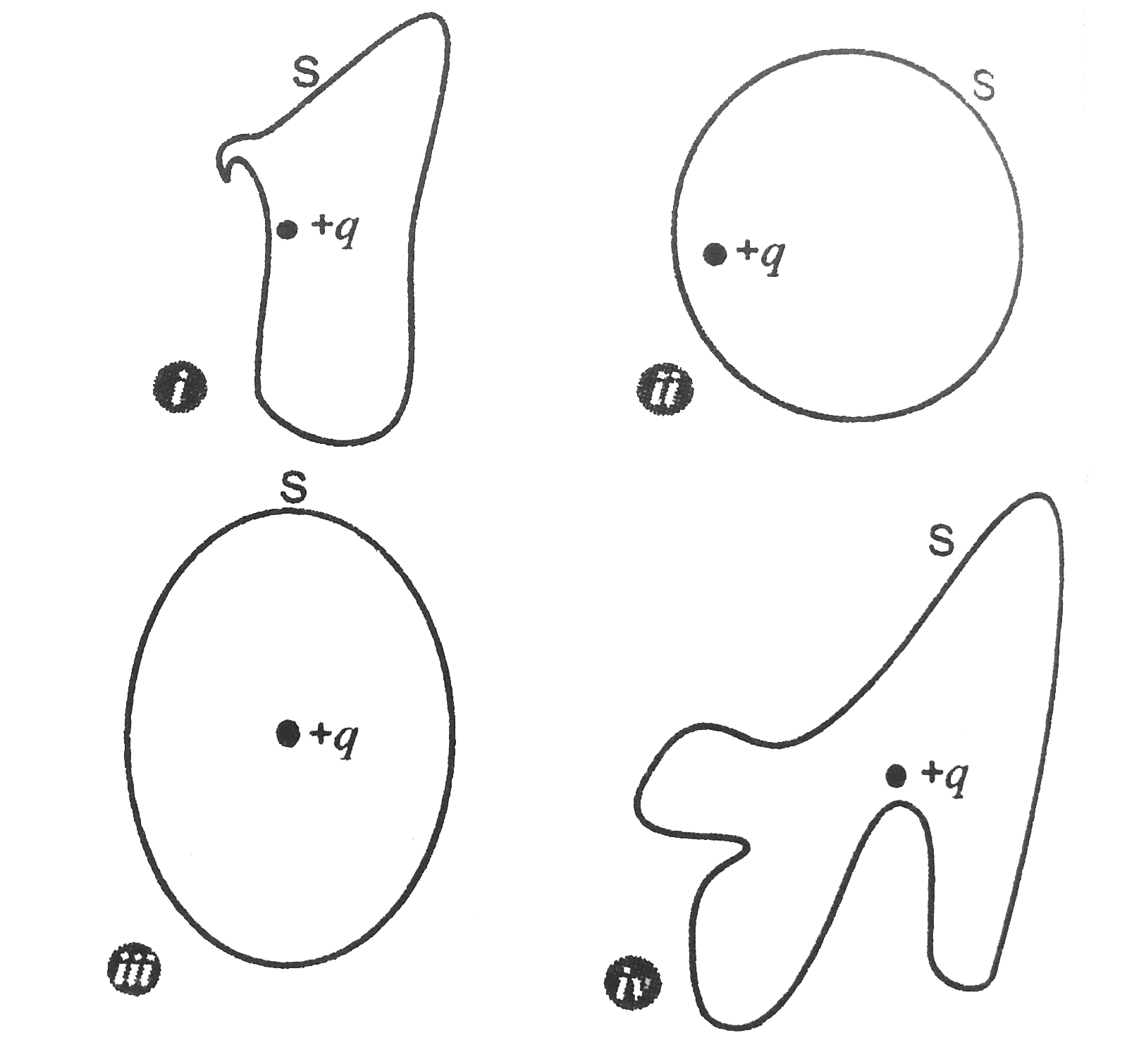A point charge 4μC is at the centre of a cubic Gaussian surface 10 cm on edge. Net electric flux through the surface is
2.5×105Nm2C−1
4.5×105Nm2C−1
4.5×106Nm2C−1
2.5×106Nm2C−1
The correct Answer is:B
To find the net electric flux through a cubic Gaussian surface with a point charge at its center, we can use Gauss's Law. Here is the step-by-step solution:
Step 1: Identify the Given Values
- Point charge, Q=4μC=4×10−6C
- The edge length of the cube is given, but it is not needed for calculating the electric flux.
Step 2: Recall Gauss's Law
Gauss's Law states that the electric flux ΦE through a closed surface is equal to the charge enclosed Qenc divided by the permittivity of free space ϵ0:
ΦE=Qencϵ0
Step 3: Substitute the Values into Gauss's Law
We know:
- Qenc=4×10−6C
- The permittivity of free space, ϵ0=8.85×10−12C2/(N⋅m2)
Now substituting these values into Gauss's Law:
ΦE=4×10−68.85×10−12
Step 4: Calculate the Electric Flux
Now we perform the calculation:
ΦE=4×10−68.85×10−12≈4.52×105N⋅m2/C
Step 5: Final Result
Thus, the net electric flux through the surface is:
ΦE≈4.52×105N⋅m2/C
- Point charge, Q=4μC=4×10−6C
- The edge length of the cube is given, but it is not needed for calculating the electric flux.
Gauss's Law states that the electric flux ΦE through a closed surface is equal to the charge enclosed Qenc divided by the permittivity of free space ϵ0:
ΦE=Qencϵ0
We know:
- Qenc=4×10−6C
- The permittivity of free space, ϵ0=8.85×10−12C2/(N⋅m2)
ΦE=4×10−68.85×10−12
Now we perform the calculation:
ΦE=4×10−68.85×10−12≈4.52×105N⋅m2/C
Thus, the net electric flux through the surface is:
ΦE≈4.52×105N⋅m2/C
Topper's Solved these Questions
- ELECTRIC CHARGES AND FIELDSBOOK - NCERT FINGERTPS ENGLISHCHAPTER - ELECTRIC CHARGES AND FIELDSEXERCISE - ASSERTION & REASON
15 Videos
- ELECTRIC CHARGES AND FIELDSBOOK - NCERT FINGERTPS ENGLISHCHAPTER - ELECTRIC CHARGES AND FIELDSEXERCISE - Electric Charges
5 Videos
- DUAL NATURE OF RADIATION AND MATTER BOOK - NCERT FINGERTPS ENGLISHCHAPTER - DUAL NATURE OF RADIATION AND MATTER EXERCISE - Assertion And Reason
15 Videos
- ELECTROMAGNETIC INDUCTIONBOOK - NCERT FINGERTPS ENGLISHCHAPTER - ELECTROMAGNETIC INDUCTIONEXERCISE - NCERT Exemplar
6 Videos
Similar Questions
The electric flux through the surface

View SolutionThe electric flux through the surface

View SolutionThe electric flux through the surface

View SolutionA point charge of 2.0μC is at center of a cublic Gaussian surface 9.0 cm on edge. What is the net electric flux through the surface?
View SolutionA charge of 8.85C is placed at the centre of a spherical Guassian surface of radius 5cm. The electric flux through the surface is
View SolutionA surface enclosed an electric dipole, the flux through the surface is -
View SolutionA surface encloses an electric dipole. The electric flux through the surface is
View SolutionA charge 10μC is placed at the centre of a hemisphere of radius R=10cm as shown. The electric flux through the hemisphere (in MKS units)is

View SolutionA point charge is placed at the centre of spherical Gaussian surface. Is electric flux ϕE changed if
(a) The sphere is replaced by a cube of same or different volume ?
(b) The charge is moved off-centre in the original sphere, still remaining inside ?
( c ) The charge is moved just outside the original sphere ?
(d) A second charge is placed near the outside to the origianl sphere ?
(e) A second charge is placed inside the Gaussian surface ?
View Solution(A): A point charge is lying at the centre of a cube of each side. The electric flux emanating from each surface of the cube is 1th6 total flux.
(R ): According to Gauss theorem, total electric flux through a closed surface enclosing a charge is equal to 1/ε0 times the magnitude of the charge enclosed.
View Solution
